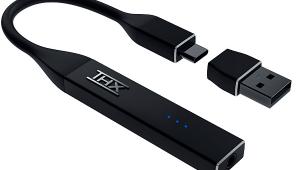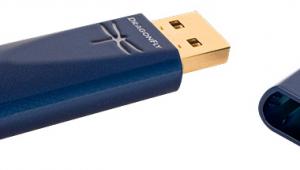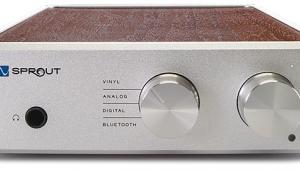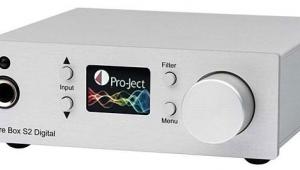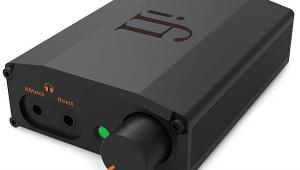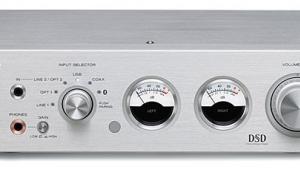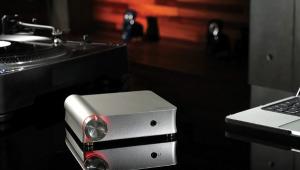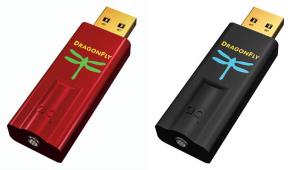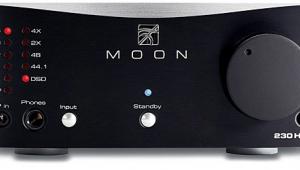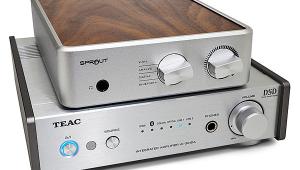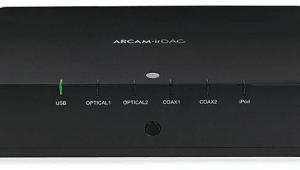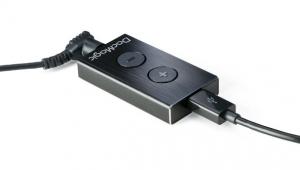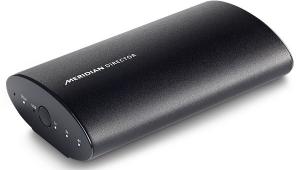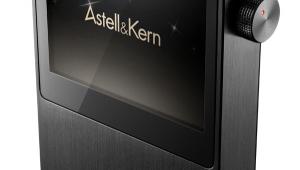Review: Arcam rCube Page 3

PERFORMANCE
The rCube sounds good - whether or not you'll classify this as a high-fidelity device depends on personal taste (I think most of the listeners Arcam have in mind here will really appreciate the sound quality they've packed into this tiny box). Sonically, it's something of an idealized boombox - a somewhat exaggerated low end, nicely detailed highs, and not much of a soundstage in evidence, but a very enjoyable listen. It sounds significantly better than you'd expect from device this small.
Arcam suggests that you disengage the bass boost and place the rCube in a corner (and I did so), both to take advantage of boundary effects for bass enhancement and to get some room-filling bounce from the side-firing drivers. The rCube's definitely got sufficient power (90W RMS nominal output, according to the manufacturer) to fill a room, though I wasn't really convinced that there was much of a stereo image.
The low end is impressively solid. Buster Williams' bass on Herbie Hancock's "Hidden Shadows" (from Sextant) had great punch and a recognizable instrument tone - a nice job from the two 4" drivers. Moving the unit out of a corner and reactivating Arcam's psychoacoustic bass boost algorithm, the rCube's low end output was was still convincing. It's a bit of an artificial sound - I felt that material that was a little muddy on the bass end to begin with, such as PJ Harvey's "In the Dark Places" (from Let England Shake) got a bit cloudy for my taste, but not unreasonably so.
Overall, the rCube's output seemed true to its sources, and given the range of content you're likely to be feeding it from an iPod or iPhone, it's revealing enough that you'll easily be able to distinguish your grainy, indistinct 128 kbps mp3 files from your lossless material. There's plenty of detail on tap here; and it's not at all a chore to listen too at length.
But audio performance isn't necessarily the real story with a device like this. As I felt was the case with the Sonos S5, the aim here seems to be marrying good performance to as simple a user experience as possible, and on those grounds the rCube succeeds admirably.
The touchpad let me select easily (with taps of the "source" and "wireless" buttons) between connected iOS devices and the two streaming dongles; the LEDs provide just enough feedback to let you know you're on the right track. The IR remote smoothly controlled all iPod functions, and when streaming wirelessly, iPod and iPhone volume changes were reflected instantaneously by the rCube - no pesky lag, which I've experienced occasionally with AirPlay products in the past.
 Living up to Arcam's claims, the rCube ran from its internal battery for a little over 7 hours continuously at low-to-moderate volume, receiving wirelessly for the majority of the time (to maximize performance, you can disable charging while an iPhone or iPod is seated in the dock). The rWave USB dongle can be run comfortably from a Mac keyboard USB port; that generally sets off an insufficient power flag even for charging a mobile phone. The rWand didn't noticeably affect battery life of my 5th generation iPod.
Living up to Arcam's claims, the rCube ran from its internal battery for a little over 7 hours continuously at low-to-moderate volume, receiving wirelessly for the majority of the time (to maximize performance, you can disable charging while an iPhone or iPod is seated in the dock). The rWave USB dongle can be run comfortably from a Mac keyboard USB port; that generally sets off an insufficient power flag even for charging a mobile phone. The rWand didn't noticeably affect battery life of my 5th generation iPod.
I only had a single rCube to test, but multiple units can be set to associate not only with various dongles, but with one another, building a small and easily reconfigurable multiroom wireless network. If the pairing process is as simple as it was with individual iOS devices, this is worth investigating for anyone whose needs run in that direction.
A minor point: The rCube's black gloss finish is just as prone to picking up fingerprints as an Apple device, so you might want to keep some wet naps on hand should your rCube spend a lot of time at barbecues. A microfiber cloth is thoughtfully provided.
- Log in or register to post comments
